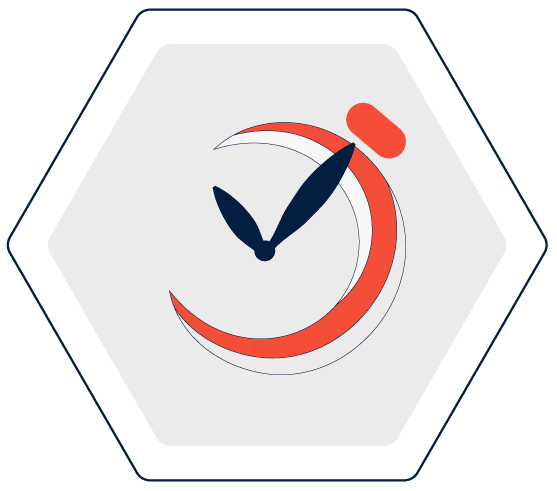
JOIN ION SCIENCE AT
SENSOR + TEST 2023
VISIT US AT BOOTH 512 IN HALL 1
Countdown to Sensor + Test 2023
Registration for this event is now closed.
SEE TWO OF THE WORLD’S LEADING SENSORS FOR THE MEASUREMENT OF VOLATILE ORGANIC COMPOUNDS (VOCS) AND PARTICULATE MATTER (PM) AT SENSOR + TEST 2023
Attending Sensor + Test 2023 visitors can see ION’s latest Sensing Technology and discuss their applications with the technical experts on the stand.

SPEAK WITH ION SCIENCE TECHNICAL INTERGRATON AND GAS EXPERTS

WHY?
EXPLORE THE LATEST SENSING TECHNOLOGY AND ENHANCE YOUR EQUIPMENTS PERFORMANCE

WHERE?
NUREMBERG, GERMANY – BOOTH 512 HALL 1

WHEN?
9 – 11 TH MAY 2023
VOLATILE ORGANIC COMPOUND (VOC) PID SENSORS
WHAT ARE VOLATILE ORGANIC COMPOUNDS?
VOC gases are present in everyday life and can be harmless, some however, are not and can be hazardous to health and the environment.
PID sensors analyse and detect a vast array of chemicals, though humidity is a major challenge for many PID manufacturers, however, all of ION’s MiniPIDs have a patent-protected design with a third electrode that overcomes this challenge, delivering a stable signal from 0 – 99% RH.
The sensitivity of PID sensors is extremely important in many applications; particularly where the sensors are deployed in the measurement of trace VOCs. Again, ION leads the field, offering MiniPIDs with ten times the sensitivity of other PID manufacturers.
WHAT ARE MINIPID SENSORS?
With global organisations looking to lower safety risks and improve their environmental performance, the demand for VOC monitoring technologies is growing. Photoionisation Detection (PID) is the recommended technology to detect VOC levels in the air. PIDs break down compounds into positive and negative ions using ultraviolet light to identify VOCs.
PARTICULATE MATTER (PM) SENSORS
WHAT IS PARTICULATE MATTER?
Fine particulates are a particular health concern, and the requirement for monitoring equipment is growing rapidly alongside tightening regulations. In 2021, the WHO halved its yearly average guideline limit for PM2.5 from 10 to 5 µg/m3. In the UK, under the Environment Act 2021, a maximum annual mean concentration of 10 µg/m3 by 2040 has been set as the PM2.5 target.
The EU Commission has proposed a reduction in the PM2.5 target to 10 µg/m3 by 2030, and the US Environmental Protection Agency is currently considering recommendations from its independent particulate matter review panel to lower its target from 12 to between 8 and 10 µg/m3.
WHAT IS THE NEXTPM?
The NextPM, Particulate Matter (PM) sensor was recently added to the ION Science portfolio. Following massive success in field trails at South Coast AQMD in the USA, the NextPM showed strong to very strong correlations for both PM1.0 and PM2.5 with reference instruments costing several hundred times the cost of the sensors.
Thanks to its patented airflow control technology, Next-PM ensures years of maintenance-free measurements, even in polluted and humid atmospheres. These sensors are therefore ideal for inclusion in instruments and systems that monitor industrial processes or air quality; both indoors and outdoors.
WHY VISIT ION SCIENCE’S BOOTH?
”“When customers integrate our sensors into their equipment, they know that having ‘ION inside’ enhances both their performance capability and reliability which builds trust in their brand. We, therefore, look forward to welcoming all, covering Developers, Designers, Engineers, Technicians and Product Managers to speak with us at the Sensor + Test show, so that we can explain the benefits of the unique patented technology behind the performance superiorities that ION sensors deliver.”
Peter MorrisHead of Sensors - ION Science Ltd

THE IMPORTANCE OF THE GAS RESPONSE TABLE
Here at ION Science we encourage anyone with an interest in developing a monitoring solution for VOCs, to view the gas response table. This interactive online gas search includes the response factors for over 900+ VOCs, as well as a small number of inorganic gases such as hydrogen sulphide.
VOC gases are present in everyday life and can be harmless, some however, are not and can be hazardous to health and the environment. Solvents used in paints and adhesives, and in cleaning products, are often VOCs. The distinctive smell of some new plastics is the result of the ‘outgassing’ or release of volatile organic compound gases into the atmosphere. Fuels including diesel, petrol, gasoline, heating oil, and aviation fuel are VOCs.
Harmful VOC gases are produced and released to the environment by many human activities, including transportation, manufacturing, printing, and agriculture. They are also produced naturally by plants, but these VOCs are generally harmless.

The unique technology within the MiniPID sensors and NextPM makes them ideal for OEM integration with guaranteed accurate and reliable VOC and Particulate Matter detection
MiniPID
PPB

Range: 0 to >40 ppm. Minimum detection limit: 1 ppb. 10.6 eV lamp
MiniPID
PPB WR

Range: >200 ppm. Minimum detection limit: 20 ppb.
MiniPID
10.0

Range: 0 to >100 ppm. Minimum detection limit: 5 ppb. 10.0 eV lamp.
MiniPID
11.7

Range: 0 to >100 ppm. Minimum detection limit: 100 ppb. 11.7 eV lamp
MiniPID
HS

Range: 0 to 3 ppm. Minimum detection limit: 0.5 ppb. 10.6 eV lamp.
MiniPID
PPM

Range: 0 to 4000 ppm. Minimum detection limit: 100 ppb. 10.6 eV lamp.
MiniPID
PPM WR

Range: >10,000 ppm. Minimum detection limit: 500 ppb. 10.6 eV lamp
NextPM

Real-time PM1, PM2.5, and PM10 measurements in both µg/m3 and pcs/L.




 United Kingdom
United Kingdom






